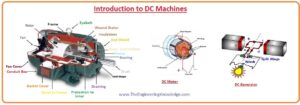 Hello, fellows, I hope all of you are having fun in your life. In today’s tutorial, we will have a look at Introduction to DC Machines. Like alternating current machines, there are 2 types of DC machines first one is DC motors that convert electrical power into mechanical power and the second one is DC generator that converts mechanical power into electrical. As ac machines are further divided into sub categories like an induction motor, induction generator, synchronous motor, synchronous generator, DC machines also have different types like shunt motor, shunt generator, series motor, series generator, etc.
Hello, fellows, I hope all of you are having fun in your life. In today’s tutorial, we will have a look at Introduction to DC Machines. Like alternating current machines, there are 2 types of DC machines first one is DC motors that convert electrical power into mechanical power and the second one is DC generator that converts mechanical power into electrical. As ac machines are further divided into sub categories like an induction motor, induction generator, synchronous motor, synchronous generator, DC machines also have different types like shunt motor, shunt generator, series motor, series generator, etc.
In DC machines like the ac machines alternating current and voltage produces that converts then to the DC current and voltage by a process called commutation. Due to that dc machines also known as commutating machines. In today’s post, we will have a look at different types of dc machines their working, structure, applications and some other related parameters. So let’s get started with an introduction to DC Machines.
Introduction to DC Machines
- DC Machines are types of electrical machines that use dc current in the case of dc motors and generates dc voltages in case of dc generators.
- DC motor transforms electrical power into mechanical power and the generator converts mechanical power into electrical.
- As in power, generation system, and industries mostly ac machines like an induction motor, synchronous motors, and generators are employed but the use of dc machines cannot be denied due to its constant speed-providing capability.
- The physical construction and design of both dc motors and generators are alike to each other. The dc generator is used in a safe environment where is no need of special protection and circuitry for the generator.
- While the motor is employed in such an environment where it can be easily affected by environmental conditions like moisture, and dust, it needs a special structure that can provide resistance to dust, fire, and some other related effects.
- We are familiar with the common use of dc batteries that used only for some limited applications where less amount of energy is required but in such applications where a large amount of dc power is needed dc machines are the best replacement of the battery.
Working Principle of DC Machines
- Any types of electrical machine either AC or DC works on the phenomena of Faraday’s law of electromagnetic induction.
- This law states that if any conductor through which current is passing is placed in the magnetic field a force act on this conductor due that it rotates in the field.
- The direction of rotation of this conductor in the field can be found by using the very famous Left Hand Rule of Fleming.
- The Faraday’s law also states that if we put any conductive loop in the field the voltage will induce in that conductive device the direction of induced voltage can be fined by the right-hand rule.
EMF= dø/dt
Types of DC Machines
- There are 2 main types of DC machines first one is a generator and the second one is a dc motor, dc motor uses dc current and provides mechanical power and dc generator generates dc voltage.
- As we discuss when current-carrying conductor when placed in field emf induced force apply on it.
- There are two main categories by which the dc machine gets excited first one is self-excited and the second one is separately excited.
- In self-excited machines field current produced by the machines itself while in separately excited machines the field current is provided by the separated source.
- Due to these two excitations methods, the dc machines are further divided into different types that are described here.
- Compound DC machine
- Shunt DC machine
- Separately excited DC machine
- Series DC machine
- Let’s friends now we discuss all these types with the detailed.
Separately Excited DC Machine
- If there is no internal voltage induced at the field windings and there is no field current so external power source is connected at the field winding to produce current and voltage these winding is known as separate windings.
- In the given figure, you see the detailed circuit of separately excited machines.
Shunt DC Machine
- In this type of dc machine the field winding (it is located at the stator of a machine) linked with the armature winding (wound rotor) in parallel.
- Due to a parallel connection, the voltage across the field windings is equaled to the supply voltage in the case of a motor and equals the generated voltage in the case of a generator.
- So these windings have large no of turns. In a given diagram, you can see the circuit of shunt dc machines.
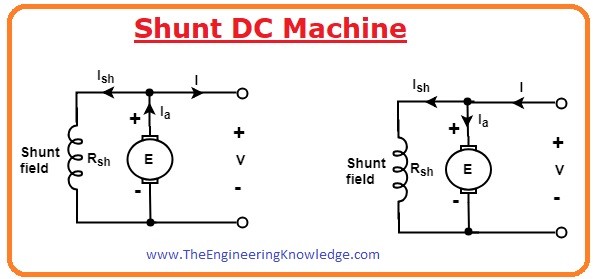
Series Wound DC Machine
- In these dc machines, the field windings are connected with the armature windings in series connection schemes.
- As this winding is in series so the armature current also passes through it that has high value for less power losses the turns of the field windings are less in this machine.
- In the given figure, you can see the circuit diagram of these machines.
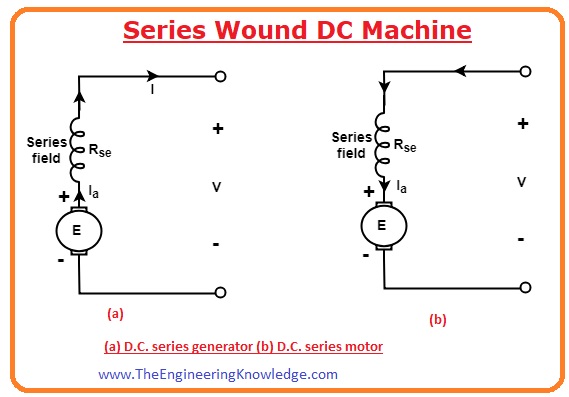
Compound DC Machine
- This motor consists of series and shunts windings in its circuitry. 2 windings are placed at every pole of the machine.
- The number of turns in the series is less due to the large value of armature current flowing through it and shunt windings have large no of turns.
- There are 2 methods by which these two windings are connected in these machines if the field windings are in parallel with the armature windings then the machines are known as the short shunt compound. In the given figure, you can see these arrangements.
- If the field windings is in parallel with the armature and series windings the machines are known as the long shunt compound machines. In the given figure, you can see resultant circuitry.
That is a complete post on the dc machines if you have any questions about this post ask in comments. See you in the next tutorial.


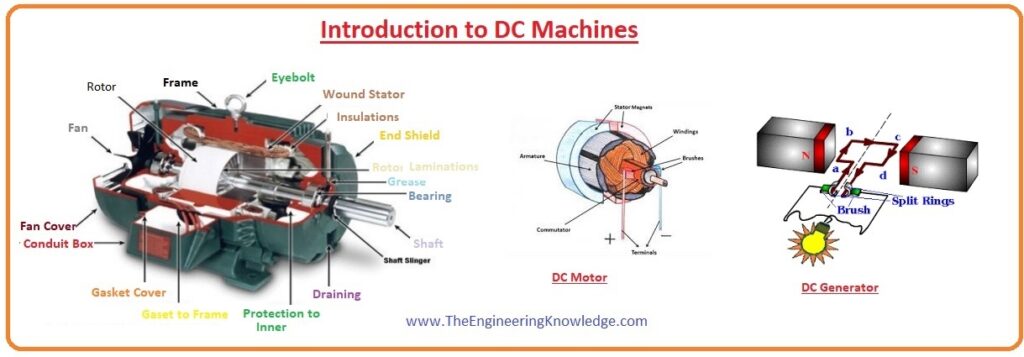
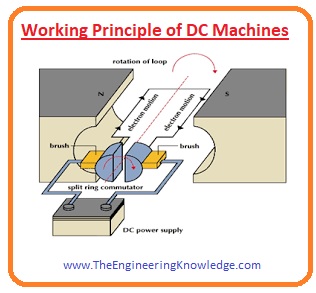
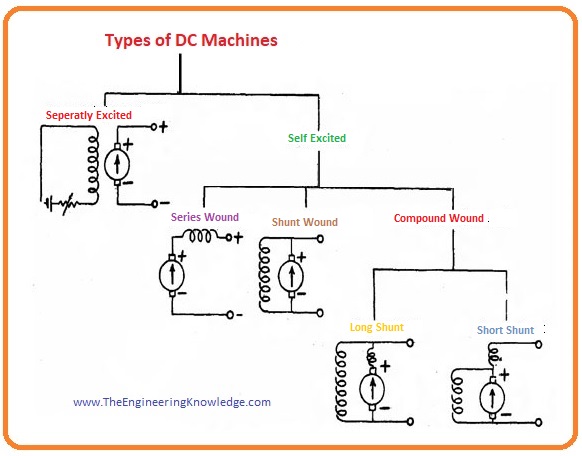
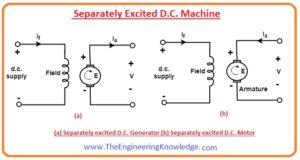
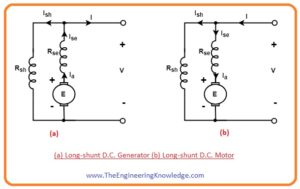




Nice read, I just passed this onto a colleague who was doing a little research on that. And he just bought me lunch since I found it for him smile Thus let me rephrase that: Thank you for lunch!